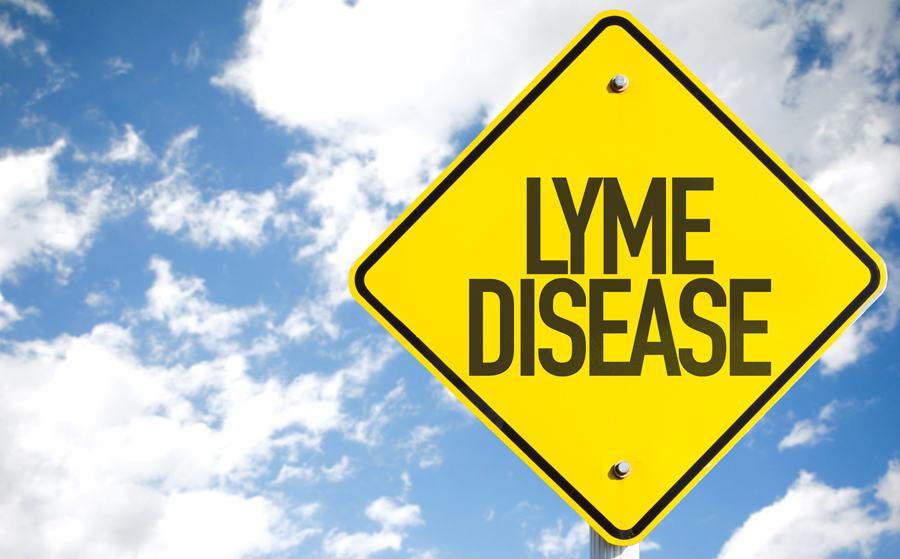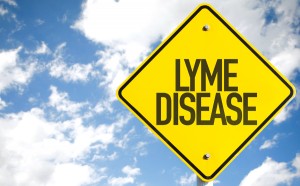Borrelia burgdorferi infected deer ticks in the Outer Banks of North Carolina

A recent study on the transmission of Borrelia burgdorferi (Bb), the spirochete associated with Lyme disease, in the Outer Banks of North Carolina (NC), highlights the difficulties in determining the actual risk of Bb-infected ticks present in particular regions. [1]
by Daniel J. Cameron, MD MPH
The Centers for Disease Control and Prevention (CDC) have been charged with identifying counties endemic for Lyme disease (LD). But how accurate is the information provided to the public? As of 2016, 50% of the counties in the USA have been designated as endemic for the disease. [2]
“The presence of I. scapularis [black-legged ticks] has now been documented from 1,420 (45.7%) of the 3,110 continental United States counties, as compared with 111 (3.6%) counties for I. pacificus,” according to Eisen from the CDC’s Division of Vector-Borne Diseases. [2]

“The spirochetes were consistently detected in questing adult ticks at the site in collections made during an 18-year period,” explains Levine, from the College of Veterinary Medicine, North Carolina State University. [1]
The infected ticks in the Outer Banks of NC carried strains remarkably similar to the Northeast B. burgdorferi sensu stricto described by Dr. Willy Burgdorfer. “The 16 isolates that we sequenced had 98–99% homology with B. burgdorferi sensu stricto,” explains Levine. Yet, the Outer Banks of NC has not been designated as endemic for Lyme disease.
“Although transmission of B. burgdorferi on the Outer Banks appears stable, cases meeting the current CDC Lyme disease definition have not been diagnosed and reported to the NC Department of Public Health,” Levine points out. [1] “Few areas in the Southeast currently meet Centers for Disease Control and Prevention criteria, which requires two indigenous cases to be reported in the same county for the disease to be considered endemic.” [1]
Lyme disease cases have been diagnosed in NC since 1983, according to Pegram [3], including those reported by the CDC. [4] But it wasn’t until 2009 that the CDC designated Wake County endemic after two individuals met the case definition for Lyme disease. Alleghany, Guilford and Haywood counties in NC have since been declared endemic, as well.
Meanwhile, the Outer Banks of NC has yet to be designated. “A paradoxical contrast is apparent. Although reservoir competent tick hosts and B. burgdorferi transmission are occurring in both Western Virginia and Coastal Virginia and Coastal North Carolina, human cases are primarily being diagnosed in the western section of these states.” [1]
Note: There have been independent efforts to communicate the risk of Lyme disease in NC. For example, TickChek publishes a map based on CDC stats. [5]
References:
- Levine JF, Apperson CS, Levin M, et al. Stable Transmission of Borrelia burgdorferi Sensu Stricto on the Outer Banks of North Carolina. Zoonoses Public Health. 2016.
- Eisen RJ, Eisen L, Beard CB. County-Scale Distribution of Ixodes scapularis and Ixodes pacificus (Acari: Ixodidae) in the Continental United States. J Med Entomol. 2016.
- Pegram PS, Jr., Sessler CN, London WL. Lyme disease in North Carolina. South Med J. 1983;76(6):740-742.
- Lyme disease data tables. Reported cases of Lyme disease by state or locality, 2005-2015 Available https://www.cdc.gov/lyme/stats/tables.html Last accessed 12/21/16.
- Reports of Lyme Disease in North Carolina, Available from TickChek at https://www.tickchek.com/stats/state/north-carolina/lyme Last accessed 12/23/16.




APKun
04/22/2020 (8:07 am)
transmission. In these studies, we have focused on the primary pathogen of public health interest, but there is a great deal more that we need to learn to clearly understand the dynamics of spirochaete transmission. Although vector competent ticks and reservoir competent hosts are abundant in the state, the vectorial capacity of resident for transmission to humans needs further study. Arsnoe et al. (2015) documented differences in the questing behaviour of nymphal
Dr. Daniel Cameron
04/22/2020 (1:06 pm)
I agree
Tipings
03/12/2020 (3:08 am)
The majority of cases of Lyme disease are reported in the Northeast and north central United States ( Bacon et al., 2008 ), but confirmed cases of Lyme disease are also regularly reported in the Southeast ( Pegram et al., 1983 ; Oliver, 1996 ; Centers for Disease Control and Prevention (CDC), 2015 ). Few areas in the Southeast currently meet Centers for Disease Control and Prevention criteria, which requires two indigenous cases to be reported in the same county for the disease to be considered endemic ( CDC, 2015 ). Human cases are less numerous and more widely geographically dispersed in North Carolina and other southeastern states CDC (2015). However, infected questing
Susan
02/18/2017 (5:21 pm)
Considering how many people that have it, or know someone that has it, I can tell you that the west side of the Cascades can be added to that list. But let’s be honest…this is an epidemic situation, not endemic. The powers that be know it. I just wish I knew why they are denying it. People are suffering, and very few even care.
Chris
07/20/2017 (9:45 pm)
I have lyme. I was diagnosed late last year. I went through the standard 20 day treatment and then… wha.. la… I would be good as new. Well… I have still always felt miserable up to today. So I when to get retested and low and behold I still have lyme. So I fall right into your statement ” People are suffering, and very few even care”…. I can find no one who raises and eyebrow that I still tested positive. The only thing I was told was that “sometimes” there can be a false positive and to get check again in 6 months. So what do I do with my crappy days until my next test (which I am sure will be positive again). The rollercoaster does not stop and the end of the ride.
Dr. Daniel Cameron
07/21/2017 (11:23 pm)
The tests cannot be used to tell when a tick-borne illness has resolved.